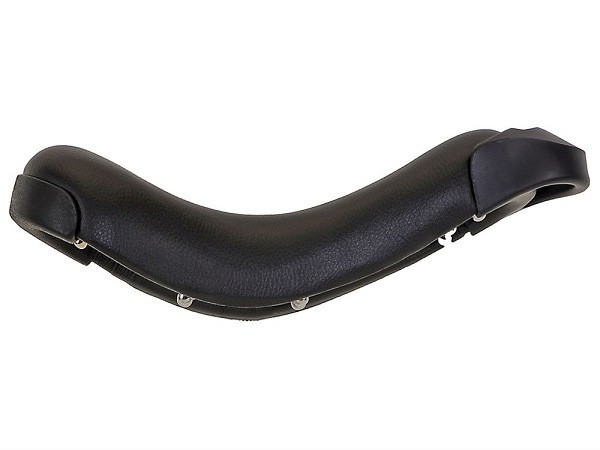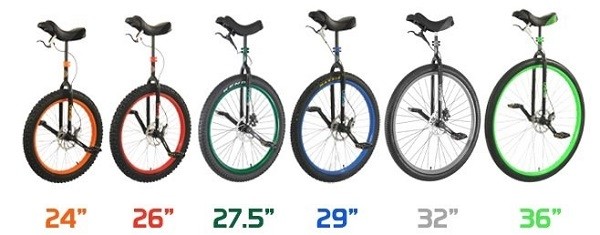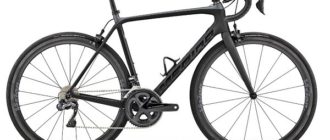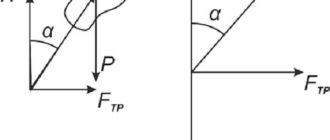Many of you have probably seen a bicycle with one wheel at least once. What is this wonder of technology that circus clowns often perform acrobatic stunts on? The unicycle became widespread thanks to the performances of acrobats, who confidently ride it around the arena, performing various tricks and causing the admiration of the audience.
Over time, the unicycle went beyond the circus arena, and now the monocycle is one of the most exciting attractions. Someone thought that going down the mountain on a two-wheeled bike is very easy, and the adventurers came up with an even more extreme sport – mountain monocycling. The popularity of the discussed transport is growing, and it is likely that very soon it may compete with conventional two-wheeled bicycles. Especially since there are already such sports disciplines as unipolo, basketball and hockey on monocycles.
History of origin
There are several versions of the appearance of the unicycle. According to the most common, he appeared almost at the very end of the 19th century, and already at the beginning of the 20th century craftsmen were able to assemble a model of such a bike, equipped with a motor. Surely in very old photographs and historical movies, you saw a very bizarre bicycles with an unusually large front wheel and disproportionately small rear. It goes by the very beautiful name of “penny-farthing.” This design was the progenitor of the unicycle or monocycle.
Most of the weight of the rider on the penny-farthing was on the front part of the bike, as a result, on higher ground the cyclist was tossed up and he had to keep his balance with all his might. Over time, it became clear to the designers that with some skill and training, the rear wheel becomes an absolutely useless element. “Rudiment” was removed along with the steering wheel – and so the first monocycle appeared.
The wheels of the first models were very big, so cyclists had to make a lot of effort to keep the balance. Accordingly, skilful stuntmen and circus clowns rode unicycles. Over time, the appearance of unicycles has changed slightly – the wheel became smaller, and adroit people who were able to curb this miracle of engineering, much more.
Monocycle equipment
What is a bicycle that has only one wheel? The word “unicycle” or “unicycle” consists of two parts: the prefix “uni”, which means “one” and the cycle – the wheel. At first sight it seems that the unicycle set-up is primitive. In the classic form the structure of a monocycle looks as follows:
- The wheel itself with spokes (36 or 48);
- frame-pillar;
- saddle;
- seat tube;
- seatpost clamp;
- pedals;
- the carriage with the connecting rods.
In most cases, the brakes and chain drive are not installed on it, so the transmission is only one – fixed. Now that the unicycle is becoming increasingly popular, the models are adapted for the average everyday person who has nothing to do with circus and extreme sports. Today’s models are fitted with:
- handlebars;
- brakes;
- chain drives;
- electric drives.
Someone may think that such a vehicle does not need a steering wheel at all. But in this case, this element serves not to change the direction of motion, but helps to keep the balance and evenly distribute the load. Although many people find it more convenient to balance with the hands and torso.
On the classic model of monocycle brakes are under the saddle. The brake handles are also there. If the unicycle has a handlebar, the handles are placed on its surface.
Some modifications of unicycles still use a chain gear: for example, “giraffes”. They are much higher than usual monocycles, and the carriage on these models is located in the frame above the wheel.
Electric unicycles are very different from similar models. They freely do without a frame. Such models are more like single-wheeled segways.
Types of sports and riding styles
In the past, bicycles with one wheel were the property of circus performers. Today, there are more and more fans of such an unusual vehicle. Enthusiasts have begun to adapt classic unicycles to perform stunts or ride on different surfaces. Moreover, they managed to go not only to curbs and city stairs, but also to overcome the sports bar.
That’s how narrow sport disciplines emerged, using bicycles that are not quite ordinary:
- Trials. The essence is to overcome obstacles on rough terrain while maintaining high speed. The design of such bikes should be as strong and reliable as possible. On these models, brakes are installed on a mandatory basis.
- Freestyle is the performance of tricks on the unicycle. Jumps, turns, loops and turns – all this looks just great and very impressive. Accordingly, the construction of such a bike is characterized by endurance and durability, because it has considerable loads.
- OffRoad monocycle – riding off-road and overcoming steep slopes. Currently, this sport is widespread, because the lightweight and practical design of monocycle allows you to open up new horizons.
- Hiking. This is another sporting discipline in which unicycles can be used. Some models are equipped with luggage racks and special mounts that allow you to put everything you need.
- Street – perhaps the most common “circus” direction, which includes jumping on sidewalks, overcoming obstacles, performing various tricks. This also includes regular riding on 1 wheel.
Who would have thought, but on the discussed transport can go on a long journey. Some models are equipped with special mounts for bags. Wheel diameter of these models ranges from 29 to 36 inches.
In addition to cycling disciplines, monocycle appeared in such team sports as hockey, basketball and polo. Hockey on a unicycle is rightly considered one of the most traumatic sports, because the action unfolds on the ice. The rules of the game are standard, only instead of skates – a monocycle.
Basketball on unicycles almost does not differ from the classical version. Players move around the field with the ball, trying to throw it as often as possible in the opponent’s basket. The sport uses bicycles with 24-inch wheels and lightweight pedals. Competitions are often held in European countries.
Polo is a team game where players move around the field on horses. Unipolo uses bicycles with one wheel. The size of the playing field is slightly smaller than in the classic game. The shape of the stick is also different, as players do not move around the field on horses, but on a unicycle. Monocycle polo appeared in Russia in 2015.
Stages of learning to ride a unicycle
Perhaps the most difficult thing to learn is to learn how to keep your balance. But it is this skill that determines success in the future. At the same time, you need to learn how to feel confident at both low and high speeds. The hardest thing is to make the first step. That is why it is so important to learn primitive skills (to keep balance, move forward and stop). You are unlikely to be able to ride a monocycle on the street straight away – it is very difficult to start moving and ride a few meters without a support. Although if you are a confident rider on a two-wheeled bike without hands, it is possible that a monocycle will quickly subdue you.
The main hitch is finding a support. At first you can try to ride along a fence – this is the most suitable option. Much worse to learn when there are no suitable conditions. In addition, riding near the fence is not very convenient to pedal. The ideal is to ride along a narrow corridor, where both hands can touch the wall. There is another more or less comfortable way – riding with two long poles that can be used as a support. Here there are no restrictions, and the pedals rotate freely, but this way you will not learn to rely solely on your own strength.
Mastering the skills of riding a 1-wheel bike can be done in several steps:
- Landing and keeping your balance. This is the most difficult stage, which can take a long time to master. You will need a suitable support – it can be a fence, closet, railing, wall or any furniture. To begin, simply sit in the saddle and, holding onto the support, try to keep your balance, concentrating on your hips. Over time, begin to let go of your hand, trying to stay in the saddle for at least one minute.
- Forward Movement. To do this, you need to tilt your body slightly forward and move your center of gravity there, and then smoothly start moving. In order to stop the bike, you need to lean back sharply and stop pedaling. Strongly roll backwards is not worth it – there is a chance of “letting” the bike out from under you. Your movements should be smooth. If the wheel goes out from under you, try to just jump off it. At this stage try not to swing your arms around strongly – maneuver your torso and focus your attention in front of you. Gradually increase the distance, keeping your speed to a minimum.
- Turning. To bend and change the trajectory of the movement, shift your body weight slightly on one hip – to where you are going to turn. After turning, distribute the load evenly. Start with a small radius and gradually increase the amplitude.
As soon as you feel confident in your movements, move on to a new goal – to ride 100 meters, turn around without getting off the monocycle, and go back. If everything went smoothly, you can improve your skills further, having fun and increasing the load. Do not forget that riding a monocycle is an excellent training of the vestibular apparatus and an unforgettable impression that you make on those around you.
Mastering the technique of riding, do not forget about safety. Protect your head, knees and elbows. Not redundant and firm gloves that will protect your hands from injuries in a fall.
How to turn a two-wheeled bike into a unicycle
Folk craftsmen will probably want to try to convert the two-wheeled bike into an unusual design with one wheel. If somewhere in the corner of the garage bored old bike, so why not give it a chance at a second life? You’ll need the following tools for the job:
- keys to remove the handlebars and forks;
- a crank and bottom bracket puller;
- hacksaw for metal;
- sandpaper;
- welding machine;
- vise.
The work is going to be dusty. Therefore, arm yourself with safety glasses, kerosene and unnecessary rags. Sequence of actions:
- We remove the fork, connecting rods, chain and wheels from the bike frame.
- Cut off the back and front of the frame. We leave only the seat tube with the carriage and the front fork.
- Widen the front fork in a vise for the rear wheel.
- Remove the paint from the bottom of the carriage cup, and then cut a circle with a diameter that matches the fork tube.
- On the top end of the fork, cut a hole to fit the circumference of the carriage cup. Disassemble the carriage.
- Weld the front fork to the carriage block. We check the strength of welding under load: fix the ends of the structure on two support points and put a brick (you can stand with your feet for reliability).
- Mount the carriage and connecting rods with the drive sprocket.
- Mount the rear wheel on fork dropouts.
- Pull the chain between the sprockets. Remove unnecessary links with a crank.
The chain-driven monocycle is ready. On this modification you can ride by inertia. When making a unicycle yourself, special attention should be paid to the reliability of welding joints. You can stand with your feet and jump. Ideally, there should be no cracks or dents in the joints. Otherwise, the work must be redone.
Tips for choosing a unicycle
To begin with, you need to determine the purpose of the monocycle. It is one thing if you need it only as an unusual means of transportation or a unit for training the vestibular apparatus. Quite another story, if you are looking for monocycle to overcome large distances and riding on rough terrain. From this and need to be guided.
Choosing a particular model, remember that the size of the unicycle should correspond to the length of your leg (measurements should be taken from the crotch to the floor with shoes). Do not take the length of your pants as a basis in this case. A quick guide to help navigate wheel sizes:
- 12 inches. This option is most suitable for children under 5 years. For active recreation – this is not the best option, because for riding such a bike you need the most level surface. By the way, the youngest monocyclist was only 1.5 years old.
- 16 inches. Designed for children from 5 to 8 years. Can be used on smooth asphalt or indoors with a flat surface.
- 20 inches. This is the optimal size suitable for learning to drive. On these models you can develop a decent speed, as well as perform a few primitive tricks. These unicycles are easy to store and transport.
- 24 inches. The universal size of monocycles for adult riders. Suitable for riding on flat and rough terrain, but too big for riding indoors.
- 29 inches. Suitable size for long rides and experienced riders.
- 36 inches. This is the best option for daily rides and covering long distances. Not suitable for novice unicyclists.
If you choose the wrong monocycle (for example, choose too small a size), then riding it will resemble riding a child’s tricycle. Too big wheel – also not the best option – it is difficult to maneuver and keep the balance.
Frame height is another parameter that matters a lot. Too high a seat post does not allow you to easily control the vehicle, and too small – will give the possibility to feel like a clown in the circus.
In order not to get upset after the purchase, choose a bicycle, should be guided by the following parameters:
- Small wheel diameter (for beginners – it’s 20 inches).
- Do not be enticed by the capabilities of unicycles with a chain drive (they are more difficult to learn to ride).
- Determine your riding style (there is no universal monocycles).
- Focus on your budget and the configuration of the bike (it’s good if your first model will have brakes).
The main difference between a monocycle and a regular bike is the direct transmission – the axle and hub are combined, so the rotation of the transmission is transmitted directly to the wheel.
Conclusion
Now you know what a unicycle is. This original design is an alternative to the usual two-wheeled bike. The monocycle allows you to train the vestibular apparatus and master the unusual technique of riding. You can also make it with your own hands from an ordinary bike, if you put a little effort and find the necessary tools.










